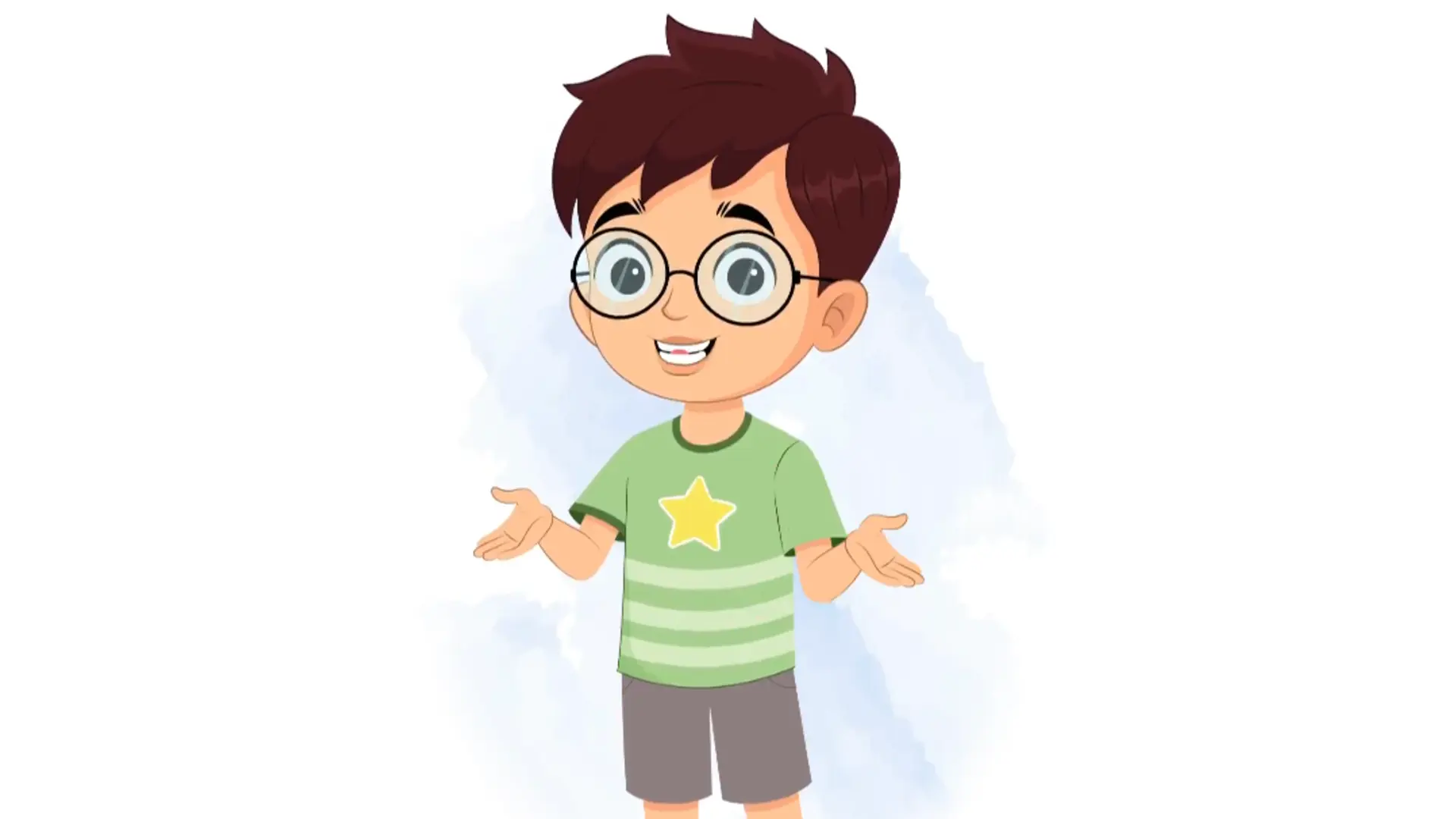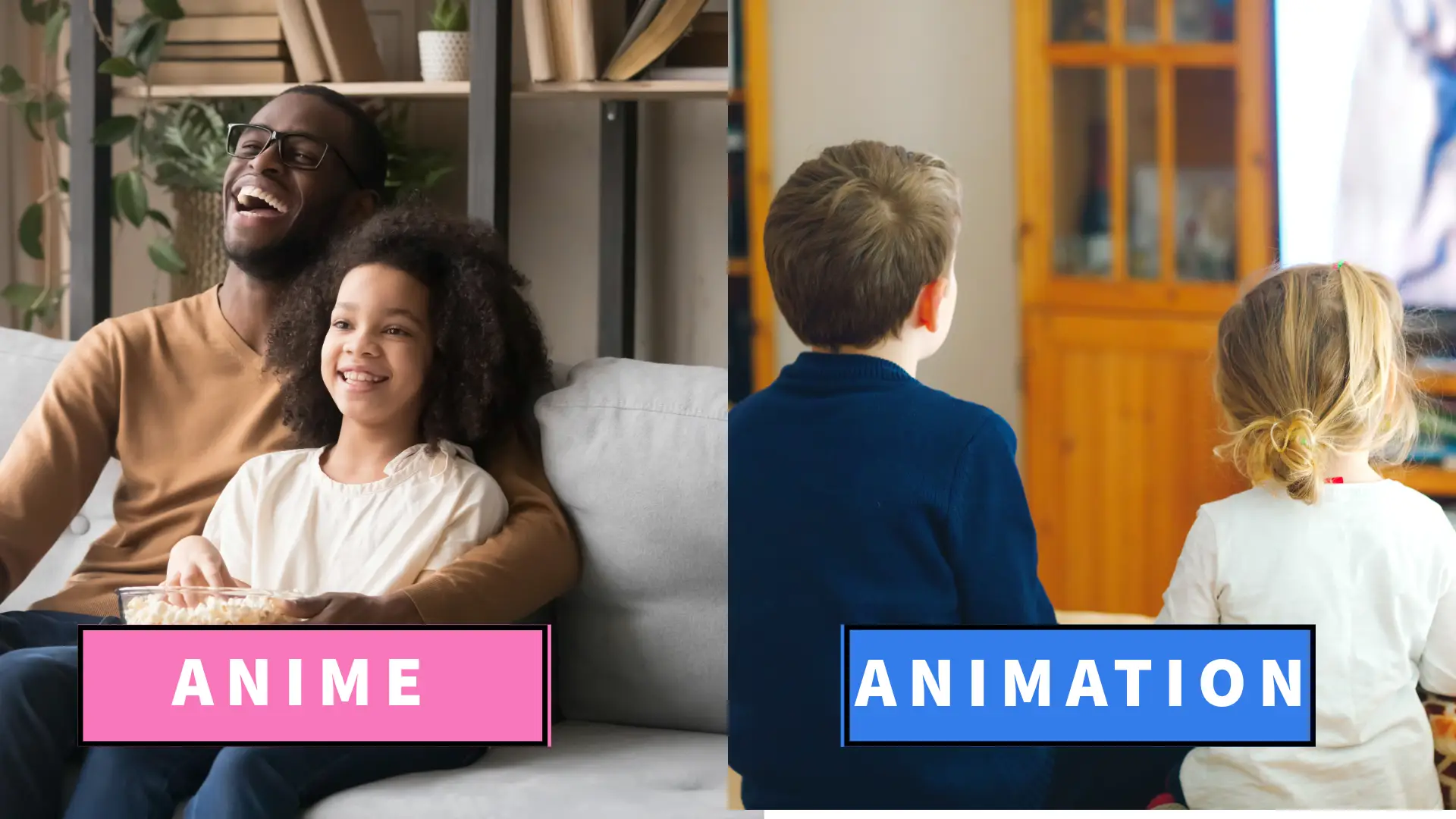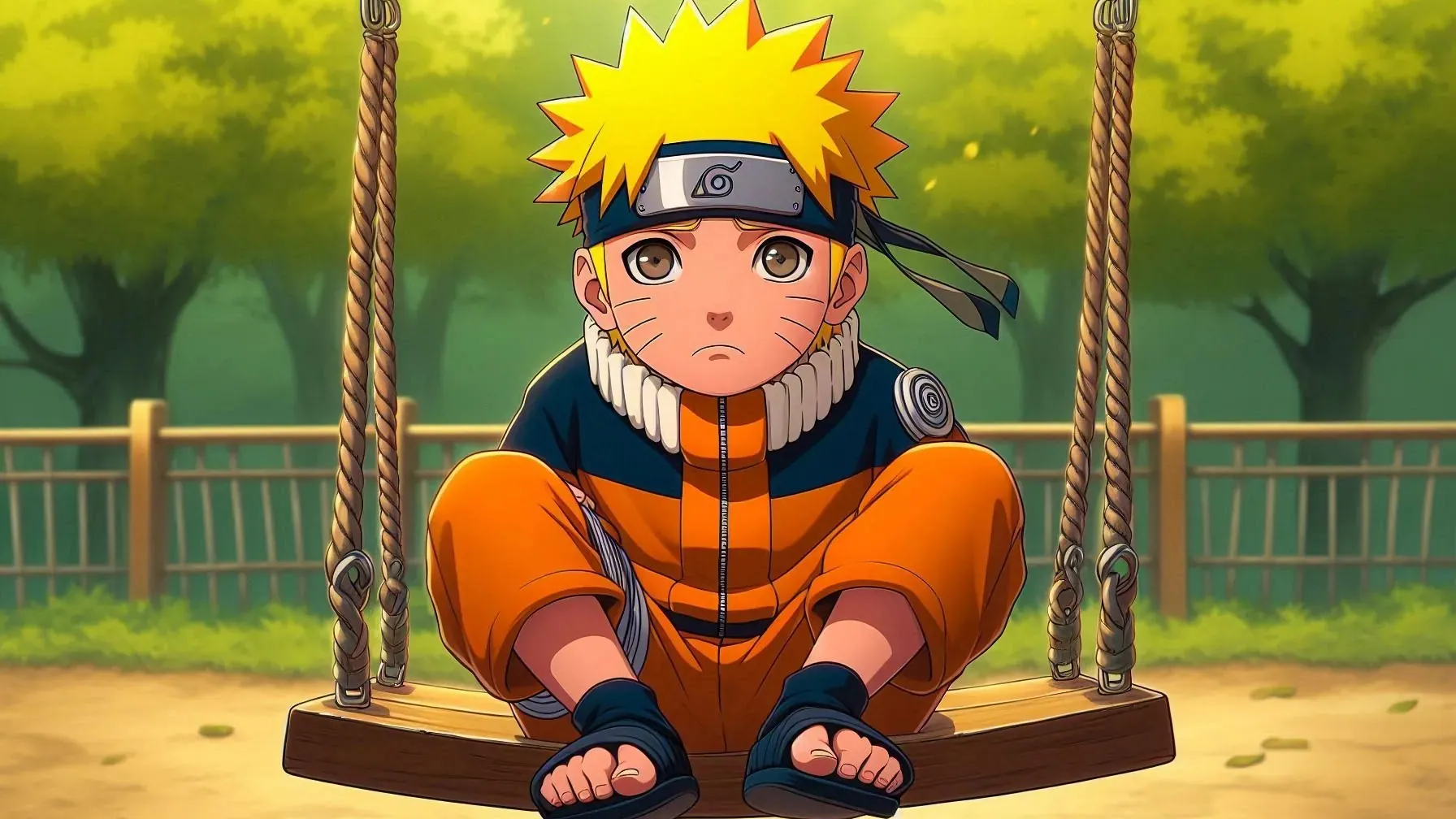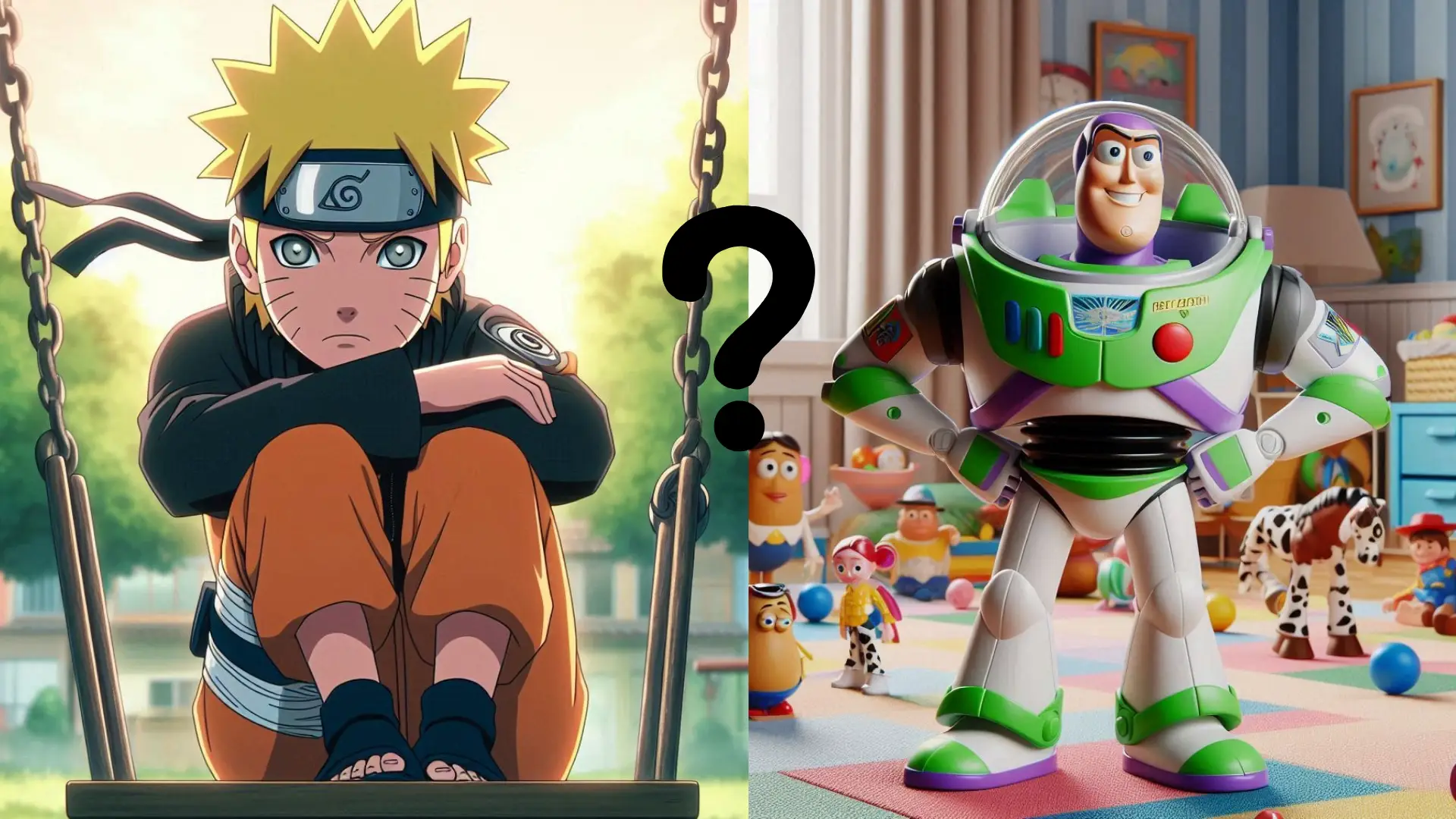Anime has gained immense popularity globally due to its unique art style, rich storytelling, and memorable characters.
A common question arises: Is anime merely another term for animation? The answer is no. While both are forms of animated storytelling, "anime" specifically refers to animation from Japan, while "animation" is a broader term applicable worldwide.
This text aims to clarify the differences between the two, examine their distinct origins, and highlight what makes each style unique.
Anime, or Japanese animation, refers to animated works created in Japan or by Japanese studios. In recent years, it has surged in global popularity, captivating audiences of all ages with its distinct art style and compelling storytelling.
Fact - Animes are mostly used for entertainment and advertising.
Some well-known examples of anime include:
While the main difference between anime and regular animation is its Japanese origin, anime stands out for more reasons. It places a strong emphasis on storytelling, narrative depth, and character development, making it not just visually stunning but emotionally engaging too.
Anime has a special way of hooking you from the very beginning, with intricate plots and complex characters that keep you invested till the very end. Whether you're into action, fantasy, or romance, anime has something for everyone!
On the other hand, animation refers to any animated content produced outside of Japan. It's a broad term that encompasses everything from feature films and advertisements to YouTube videos, corporate presentations, and educational materials.
Some well-known examples of popular animations include:
Animation is a versatile art form used across various industries, and while it differs from anime in terms of cultural style and approach, it shares the common goal of bringing stories and characters to life through motion.

The main difference between anime and other forms of animation lies in their origin and cultural influences. Anime is produced in Japan—or by Japanese studios—and is deeply rooted in Japanese culture, traditions, and storytelling. In contrast, animation refers to works created outside of Japan, such as those from Hollywood, Europe, or other regions, each reflecting their unique cultural backgrounds.
While we’ve touched on the basics, there are several other differences between anime and animation that set them apart. Let’s dive into these key differences in more detail.
As mentioned earlier, anime refers to animation produced in Japan, deeply influenced by the country’s culture, traditions, and distinctive art styles. In contrast, animation is a broader term encompassing any animated content created outside Japan, shaped by the cultural influences of its region of origin—whether Western, European, or otherwise.
Another key difference between anime and animation lies in how they are used. In Japan, anime is primarily created for entertainment and advertising. Popular series like Naruto and Death Note are designed to captivate audiences, but their influence extends beyond the screen—beloved characters often appear in commercials promoting various products and services.
In contrast, animation produced outside of Japan serves a broader range of purposes. While it’s still a major form of entertainment, it’s also widely used in education, corporate training, advertising, and explainer videos to present information in an engaging and accessible way.
Another major difference between anime and animation is their target audience. Animation typically appeals to a broad range, offering light-hearted, family-friendly content suitable for all ages.
Anime, however, covers a wider variety of themes—from kids' shows like Shonen to mature content like Seinen. It spans diverse genres such as action, romance, fantasy, and even dark or psychological themes. This depth often leads to a more devoted fanbase, with viewers expressing their passion through merchandise, fan art, and cosplay, making anime a more immersive experience for many.

Anime typically retains a strong connection to traditional hand-drawn techniques, even in the digital age. While modern anime incorporates CGI and motion capture to enhance visuals, most frames are still drawn by hand, contributing to the expressive and unique aesthetic that defines the medium.
In contrast, animation outside of Japan often leans more heavily on CGI and digital tools. From Pixar’s stunning 3D films to the iconic, stylized look of shows like The Simpsons, Western animation embraces a wide range of sleek, polished visual styles.
Anime often stands out for its deep, complex storytelling. Shows like Naruto explore themes such as personal growth, politics, and social struggles with rich plots and emotional depth.
In contrast, non-Japanese animation typically focuses on simpler, light-hearted stories aimed at younger audiences. While fun and visually engaging, they usually don’t explore the same level of narrative complexity as anime.

While anime and general animation follow similar stages—concept creation, storyboarding, animation, voice acting, editing, and final touches—they differ in execution.
Anime relies heavily on hand-drawn frames, with CGI and motion capture used for enhancement. This traditional approach gives it a unique, expressive style.
General animation leans on digital tools from start to finish, using CGI for a sleek, polished look.
In short, Anime emphasizes hand-drawn artistry; general animation favours modern digital techniques.
Respect and Cultural Impact
In Japan, anime is deeply respected and embraced by all generations, reflecting cultural pride and artistic value.
Globally, while general animation is popular and well-loved, it doesn't always carry the same cultural weight or multigenerational admiration as anime does in Japan.
During the pandemic, anime experienced a massive surge in popularity. With lockdowns keeping people at home, anime’s unique storytelling and immersive worlds provided the perfect escape, quickly captivating global audiences.
This rise in popularity led to anime fandoms forming worldwide, with major streaming platforms now offering a vast selection of series. As viewers discovered anime’s gripping plots and unforgettable characters, it sparked a broader appreciation for animation, expanding interest in animated content beyond Japan.
In recent years, anime has gained immense global popularity, fueled by streaming platforms and influencers, particularly YouTubers. Viewers aren’t just watching anime—they’re actively discussing and covering episodes, with many YouTube channels dedicated to anime content.
While general animation is also widely enjoyed, its impact doesn't match anime’s. The excitement and coverage surrounding anime often overshadow that of other animation, underscoring its stronger global influence.
If you’re drawn to captivating stories, complex characters, and immersive worlds (with darker, adult themes), anime might be your go-to choice.
On the other hand, if you prefer lighter, more diverse content—ranging from educational to entertaining with varied art styles—animation, especially Western, offers family-friendly themes and innovative visuals for a broader audience.

Both anime and animation have bright futures. Anime, with its expanding catalogue, improving quality, and compelling storytelling, continues to capture global interest, especially through streaming platforms and passionate fanbases.
However, the animation is far from fading. Blockbusters like Spider-Man: Into the Spider-Verse and Frozen 2 prove its ongoing global appeal. The animation industry is projected to reach $836.56 billion by 2033, while anime alone is expected to hit $97.3 billion by 2036. Major platforms like Netflix and Prime Video are also investing heavily in anime. While both are poised for growth, anime may have the edge due to its rising popularity and dedicated following.
Did you like this post? Tell us
Leave a comment
Log in with your itch.io account to leave a comment.